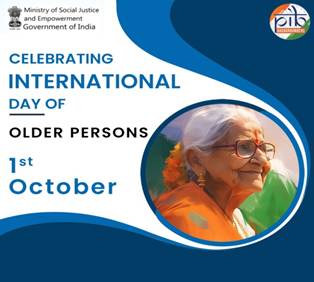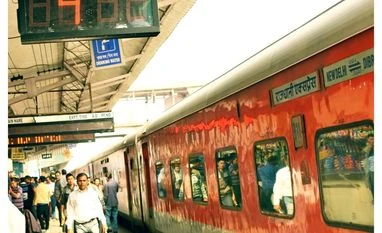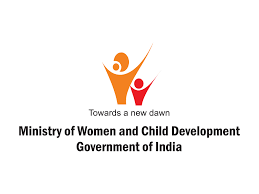Population, Challenges, and Government Initiatives
Key Takeaways
- India’s senior citizen population is projected to surge to around 230 million by 2036, making up about 15% of the total population.
- Southern states, along with Himachal Pradesh and Punjab, have higher elderly populations, with regional disparities expected to widen by 2036.
- The Ministry of Social Justice and Empowerment is the Nodal Ministry for matters relating to the Senior Citizens. It develops and implements Acts, Policies and Programmes for welfare of Senior Citizens.
- The Maintenance and Welfare of Parents and Senior Citizens Act, 2007 and the subsequently amended Maintenance and Welfare of Parents and Senior Citizens (Amendment) Act, 2019 legally obligates children and heirs to provide maintenance to parents.
Introduction
India is undergoing a rapid demographic transition, with the elderly population (60 years and above) projected to more than double from100 million in 2011 to 230 million by 2036. This evolution indicates that by 2036, nearly one in seven Indians will be aged 60 years or older, representing a fundamental restructuring of the country’s population composition. Keeping this transition in mind, India has adopted multiple policies, programmes and legal provisions to address the challenges arising from declining fertility and rising life expectancy rates.
Importance of Addressing Elderly Needs
Better nutrition and healthcare have helped people live longer in India, but this also brings new challenges and opportunities for growing old. The Government must prioritise access to pensions, adequate housing, and quality healthcare services, particularly for the economically vulnerable elderly individuals and widows.
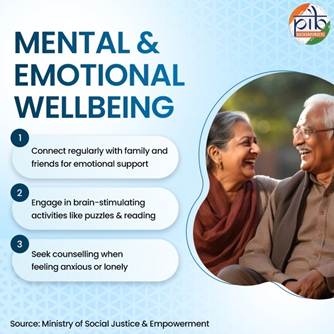
The approach towards elderly support that prioritises family and community-led initiatives while ensuring financial security, digital literacy training, long-term care insurance, digital healthcare access, assistive technologies, and engagement platforms are crucial for effectively integrating older adults into India’s emerging ‘silver economy’ i.e. economy driven by goods & services designed to meet the needs ofthe elderly, typically those over 50 years of age. It also creates work opportunities that enable the elderly to contribute their experience and expertise across various sectors.
Demographic Trends
To know how the population of older people is changing, and what’s projected for the future, a “Population Projection Report” for India and States was made in July 2020 by the Technical Group on Population Projections (TGPP). As per the report, India’s elderly population will reach 230 million by 2036, representing a profound societal transformation with extensive implications. Our country exhibits significant regional disparities in population aging and this demographic shift is not uniform across the country.
Southern states like Kerala, Tamil Nadu, and Himachal Pradesh already have a high number of elderly people, similar to developed countries. Kerala is expected to see its elderly population surge from 13% in 2011 to 23% by 2036, making it the state with the oldest population. In contrast, many northern and eastern states have fewer older people for now, but their numbers are growing fast. Uttar Pradesh has a relatively younger population, with the elderly segment projected to grow from 7% in 2011 to 12% by 2036. Southern states, Himachal Pradesh, and Punjab have above-average elderly populations, thus highlighting India’s diverse demographic landscape.
The Longitudinal Ageing Study of India (LASI) 2021 is a full-scale national survey and a seminal study on the status of the ageing population in India. This study is undertaken under the purview of the Ministry of Health and Family Welfare and is the largest in the world. The report reveals that 12% of India’s population comprises elderly individuals, a proportion projected to rise to 319 million by 2050, growing at an annual rate of approximately 3%. The sex ratio among the elderly stands at 1,065 females per 1,000 males, with women accounting for 58% of the elderly population, out of which 54% are widows. Furthermore, the overall dependency ratio is 62 dependents per 100 working-age individuals, highlighting the increasing socio-economic implications of population ageing in India.
Challenges Faced by Elderly
The elderly in India often find themselves in vulnerable positions due to a lack of adequate support systems, both institutional and familial. They confront multifaceted challenges including:
- Health: Stigmatised mental health conditions (dementia, Alzheimer’s), rising disabilities, inadequate geriatric infrastructure, Urban-rural divide in access to medical services.
- Economic Insufficient social security provisions, rise of living and medical expenses, limited financial resources.
- Social: Weakening family support systems, social isolation, neglect, lack of companionship etc.
- Digital divide: Technology adoption barriers, lack of training and accessible devices.
- Infrastructure: Inadequate literacy, emergency response system overlooking elderly as vulnerable group. Public spaces and transport in India is largely not elderly-friendly since ramps, handrails and accessible washrooms are missing in many areas.
Government Initiatives for Elderly in India
The Government of India has undertaken numerous initiatives, policies, and action plans to tackle the challenges encountered by the elderly population. The Ministry of Social Justice and Empowerment (MoSJE) serves as the nodal ministry entrusted with the responsibility of ensuring the welfare of senior citizens in India. Working in close collaboration with various line ministries including Finance, Health & Family Welfare, and Ayush, as well as State Governments, non-governmental organisations, civil society, and the private sector, the MoSJE has spearheaded the comprehensive development of policies and programs aimed at supporting the elderly population across the country. The Government is implementing a range of initiatives aimed at promoting the care, well-being, and dignity of senior citizens, with a focus on improving their overall quality of life. Key initiatives include:
Atal Pension Yojana (APY)
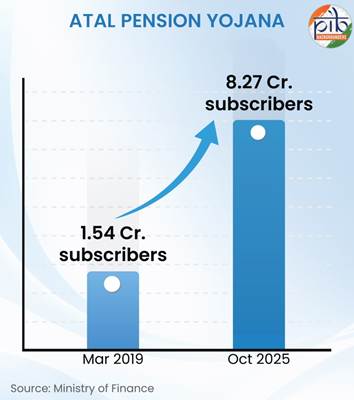
The Atal Pension Yojana (APY) is a flagship social security scheme of the Government of India administered by Pension Fund Regulatory and Development Authority (PFRDA), aimed at providing social security to Indians, particularly the poor and underprivileged. Launched on May 9, 2015, the scheme is open to citizens aged 18–40 years with a savings bank account (except income-tax payers from 1st October 2022). The scheme guarantees a minimum monthly pension of INR. 1,000 to INR. 5,000 after the subscriber turns 60, with the same amount payable to the spouse after the subscriber’s demise and the accumulated pension wealth given to the nominee after both pass away. Contributions are made through auto-debit at monthly, quarterly, or half-yearly intervals until age 60, and if returns are inadequate to fund the guaranteed pension, the shortfall is met by the Government. The Atal Pension Yojana surged from 1.54 crore enrolments in March 2019 to 8.27crore subscribers by October 5, 2025. The Assets Under Management (AUM) are more than INR 49000crores.
Atal Vayo Abhyuday Yojana
The Atal Vayo Abhyuday Yojana (AVYAY), under the Ministry of Social Justice and Empowerment, represents a comprehensive initiative designed to empower senior citizens across India. This scheme acknowledges the invaluable contributions that the elderly have made to society and is dedicated to ensuring their overall well-being and social inclusion. Through this program, the government demonstrates its commitment to empowering and uplifting senior citizens by facilitating their active participation and inclusion in all aspects of life, thereby honouring their lifelong service to the nation. The components of the scheme are:
Integrated Programme for Senior Citizens (IPSrC) Scheme
The Integrated Programme for Senior Citizens (IPSrC) provides grant-in-aid to various implementing agencies including State Governments, Union Territory Administrations through Registered Societies, Panchayati Raj Institutions, Non-Governmental and Voluntary Organisations, as well as recognised youth organisations such as Nehru Yuva Kendra Sangathan (NYKS) for the operation and maintenance of Senior Citizens’ Homes (old age homes), Continuous Care Homes, Mobile Medicare Units, Physiotherapy Clinics, and Regional Resource and Training Centres. As of August 2025, a total of 696 Senior Citizen Homes are operational across the country, spanning 29 States and Union Territories, offering free facilities that include shelter, nutrition, medical care, and entertainment to indigent senior citizens. Additionally, 84 new Senior Citizen Homes have been selected during the current financial year 2025-26 in accordance with the scheme guidelines, further expanding the reach of this vital support system for the elderly population.
Rashtriya Vayoshri Yojana (RVY)
The Rashtriya Vayoshri Yojana, launched on April 1, 2017, provides assisted living devices to senior citizens suffering from age-related disabilities. These devices, including walking sticks, elbow crutches, walkers, hearing aids, wheelchairs, and dentures, help restore near-normal bodily functions. The devices are manufactured by Artificial Limbs Manufacturing Corporation (ALIMCO), a Public Sector Undertaking (PSU). The scheme targets senior citizens belonging to the BPL category or those with a monthly income not exceeding INR15,000. Devices are distributed through camps, and for senior citizens aged 80 or above, the devices can be delivered at their doorstep. The current status[9] of the scheme as on October 15, 2025 includes:

Elderly Helpline
The Ministry of Social Justice and Empowerment has launched the National Helpline for Senior Citizens, a dedicated service to address the concerns of elderly individuals across the country. Accessible through the toll-free number 14567, Elderline provides compassionate support and connects seniors with relevant services. Launched on October 1, 2021, by the Hon’ble Vice President of India, this initiative aims to enhance the well-being and dignity of India’s aging population.
Senior Care Ageing Growth Engine (SAGE) Portal
SAGE is an innovative initiative aimed at encouraging young entrepreneurs and start-ups to develop trusted elderly care solutions and enter the “silver economy.” The portal finds, checks, and brings together reliable elderly care products and services from trusted start-ups, offering a single platform where all users can easily access them. The scheme offers equity support of up to Rs. 1 crore per project through Industrial Finance Corporation of India (IFCI) to selected start-ups, while ensuring that the total government equity in the start-up does not exceed 49%. The government acts as a facilitator, and start-ups are selected on the basis of innovative products and services.
Senior Able Citizens for Re-Employment in Dignity (SACRED) Portal
The SACRED Portal launched on October 1, 2021 digital platform enables citizens above 60 years of age to register on the portal and find jobs and work opportunities. The portal facilitates virtual matching of preferences between senior citizens and private enterprises for various positions, thereby promoting re-employment and financial independence during the later years.
Geriatric Caregivers Training
The scheme focuses on training professional manpower of geriatric caregivers who are equipped to address the diverse and dynamic needs of the elderly population. The training modules and courses encompass both clinical and non-clinical aspects, while also emphasising the wellbeing and companionship requirements of senior citizens. This component is carried out through the National Institute of Social Defence. According to information provided by the Union Minister of State for Social Justice and Empowerment in a written reply to a question raised in Lok Sabha on 18th March 2025, a total of 32 institutes were empanelled under the Scheme during the financial year 2023-24, which successfully imparted training to 36,785 trainees, thereby significantly expanding the pool of qualified geriatric caregivers available to support the elderly across the nation.
Ayushman Bharat –Pradhan Mantri Jan Arogya Yojana (PMJAY)
The AB-PMJAY scheme offers healthcare coverage of up to Rs. 5 lakhs annually for secondary and tertiary care services and hospitalisation to enrolled socio-economically disadvantaged families, thereby protecting them from financially devastating medical expenses. A significant expansion of the AB-PMJAY scheme was announced by the government on 29th October 2024, extending free treatment benefits of up to ₹5 lakh per year to approximately 6 crore senior citizens aged 70 years and above, from 4.5 crore families, regardless of their socio-economic background. As on January 15, 2025, more than 40 lakh senior citizens have successfully enrolled in the scheme, marking substantial progress in providing comprehensive healthcare coverage to India’s elderly population.
Indira Gandhi National Old Age Pension Scheme (IGNOAPS)
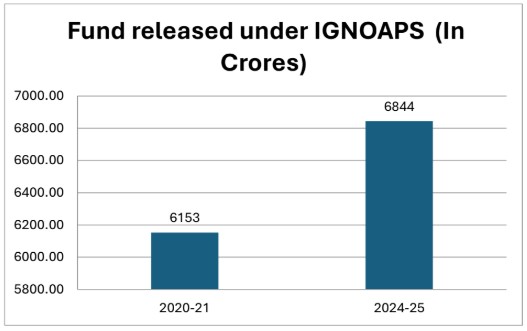
The Indira Gandhi National Old Age Pension Scheme (IGNOAPS) is a key component of the National Social Assistance Programme (NSAP), providing financial support to citizens aged 60+ living below the poverty line. Eligible beneficiaries receive a monthly pension of INR. 200 (up to 79 years) and INR. 500 (80+ years). Administered by the Ministry of Rural Development, NSAP aims to enhance livelihood security, living standards, and public health, while promoting education. As of October 2025, over 2.21 crore citizens benefit from IGNOAPS.
National Programme for the Health Care of the Elderly (NPHCE)
The National Programme for the Health Care of Elderly (NPHCE), launched in 2010-11 as a Centrally Sponsored Programme, provides accessible, affordable, and high-quality comprehensive healthcare to persons above 60 years at primary, secondary, and tertiary levels. The programme currently covers all 713 health districts across India, with dedicated geriatric services including OPD, 10-bedded geriatric wards, physiotherapy, and laboratory facilities at district hospitals and below.
Senior Citizens Welfare Fund
The Senior Citizens’ Welfare Fund (SCWF) was established under the Finance Act, 2015 to support various schemes promoting the welfare of senior citizens, in alignment with the National Policy on Older Persons and the National Policy on Senior Citizens.
Unclaimed funds from sources such as Small Savings Schemes, Employees’ Provident Fund, Public Provident Fund, life and non-life insurance policies, and Coal Mines Provident Fund accounts are transferred into the SCWF. The Ministry of Social Justice and Empowerment serves as the nodal ministry for managing this Fund.
Social and Community Support for Elderly
Social and community support plays a crucial role in promoting the emotional well-being and social inclusion of the elderly. Such initiatives reduce loneliness and foster a sense of belonging and purpose in their later years.
Family Support
Family remains the primary support system for our senior citizens, providing financial, emotional, and caregiving assistance. However, migration, urbanisation, and the increasing number of nuclear families have weakened this safety net of traditional family care. As a result, the Maintenance and Welfare of Parents and Senior Citizens Act, 2007 came into force in December 2007 which legally obligates children and heirs to provide maintenance to parents and senior citizens, reinforcing family responsibility. It mentions that: “An Act to give effect to the provisions for the welfare of parents and senior citizens as guaranteed and recognised under the Constitution by providing for the maintenance and welfare of parents and senior citizens, ensuring their overall physical and mental well-being, establishment, management and regulation of institutions for senior citizens and services therefore and for other matters connected therewith or incidental thereto”.
The Maintenance and Welfare of Parents and Senior Citizens (Amendment) Bill, 2019 introduced significant reforms to strengthen protection for the elderly population. The Amendment broadened the definition of “children” to include step-children, adoptive children, children-in-law, and legal guardians of minor children, while “parents” now encompasses parent-in-laws and grandparents. A key financial reform removed the INR. 10,000 monthly maintenance ceiling, allowing Tribunals to determine appropriate amounts based on the senior citizen’s living standards and their children’s earning capacity. The legislation elevated care standards by mandating that senior citizens lead a “life of dignity” rather than merely a “normal life.” To enhance safety, the Amendment required the appointment of a Nodal Officer for senior citizens in every Police Station and the establishment of a Special Police Unit for senior citizens in each district. The Bill also introduced homecare services for senior citizens with physical or mental impairments affecting daily activities, expanded “maintenance” to include healthcare, safety, and security, and broadened “welfare” to encompass housing, clothing, safety, while mandating that all hospitals, including private facilities, provide dedicated queues, beds, and geriatric care for senior citizens.
Role of Technology
Technology is playing an increasingly important role in supporting the elderly in India, helping improve their healthcare, safety, communication, independence, and overall quality of life. As India’s senior citizen population is expected to rise, tech-enabled solutions are becoming essential to meet the growing needs of this group Telemedicine services under the National Programme for Health Care of the Elderly (NPHCE) provide access to doctors without travel, especially useful for homebound elderly or those in rural areas. The e-Sanjeevani telemedicine platform provides free, home-based medical consultations, manages chronic conditions like diabetes and hypertension, and offers mental health counselling for loneliness and stress. Technology is increasingly playing a vital role in improving the quality of life for the elderly by enhancing safety, health monitoring, and independence. Wearable devices such as smart watches and fitness bands help track vital signs, monitor physical activity, and send alerts in case of emergencies, enabling timely medical attention. Online pharmacies make it easier for older adults to order and receive medicines at home, ensuring continuity of care without the need for frequent travel. Smart home technologies, including cameras and sensors, allow family members or caregivers to remotely monitor the well-being of seniors, offering peace of mind while maintaining privacy. Together, these innovations are fostering a more connected, safe, and dignified aging experience.
Senior Citizen Welfare Portal
The Senior Citizens Welfare Portal serves as a centralised digital platform providing seamless access to government schemes, pension programmes, helplines, and downloadable forms for accessing services. It acts as a single-window system for senior citizens, voluntary organisations, and caregivers. However, its effectiveness depends on digital literacy and outreach efforts to ensure that older persons can access it.
Ways to Assist Elderly
Social support also plays a vital role in improving the lives of the elderly in India. Encouraging community engagement and having intergenerational programs can help reduce isolation and promote mental well-being.
Housing for the Elderly
Designing urban spaces, transport, and housing for older citizens offers a great opportunity to build truly inclusive cities—by ensuring accessible transportation, well-maintained facilities, barrier-free buildings, and user-friendly public amenities that support dignity and independence in later life. The Model Guidelines for Development and Regulation of Retirement Homes, 2019were issued to encourage age-friendly housing and community living arrangements.
Promoting Intergenerational Bonding
The Department of Social Justice & Empowerment (DoSJE), Government of India, launched NAITIK PATAM, a game designed to foster inter-generational bonding, on the occasion of the International Day of Older Persons 2025.The game defines the moral values and ethics for children and its importance in family bonding through love care and respect for elders. The game so designed is to be played by the family together.
International Day of Older Persons
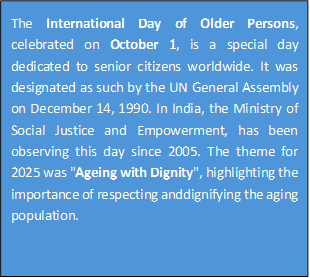
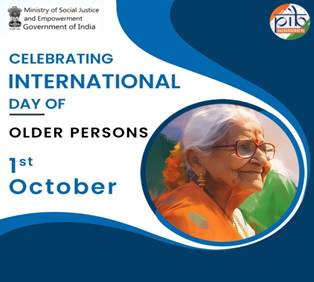
Conclusion
India’s silver economy is valued at approximately seventy-three thousand crore rupees in 2024, with projections indicating substantial multi-fold growth in the years ahead. Research identifies senior citizens, along with professionals in the 45 to 64 age bracket, as the ‘wealthiest age cohort’ globally. The senior care segment in India offers tremendous growth potential for health and wellness-focused enterprises. This burgeoning silver economy creates substantial opportunities for businesses and organisations dedicated to addressing the needs and preferences of the elderly demographic. The market is poised for rapid expansion both domestically and internationally, presenting considerable scope for innovation and development within this sector.
A comprehensive senior care system demands prioritisation of elderly needs through public-private collaboration across the healthcare ecosystem. Fundamental actions include recognising senior care as a specialised sector with requisite regulations and standards, implementing policy and regulatory reforms anchored in clear evaluation frameworks, and strengthening coordinated approaches among concerned Ministries and Departments. The framework must harness diverse stakeholders—Panchayati Raj Institutions, Urban Local Bodies, NGOs, and private providers—while ensuring inter-ministerial convergence for effective, efficient, and time-bound implementation.
References
Press Information Bureau:
https://www.pib.gov.in/PressReleseDetailm.aspx?PRID=2152593
https://static.pib.gov.in/WriteReadData/specificdocs/documents/2025/may/doc202558551701.pdf
https://www.pib.gov.in/FactsheetDetails.aspx?Id=149101
https://www.pib.gov.in/PressReleasePage.aspx?PRID=2082719
https://www.pib.gov.in/PressReleasePage.aspx?PRID=1942849
Others:
https://socialjustice.gov.in/writereaddata/UploadFile/83211672138255.pdf (Page 3)

